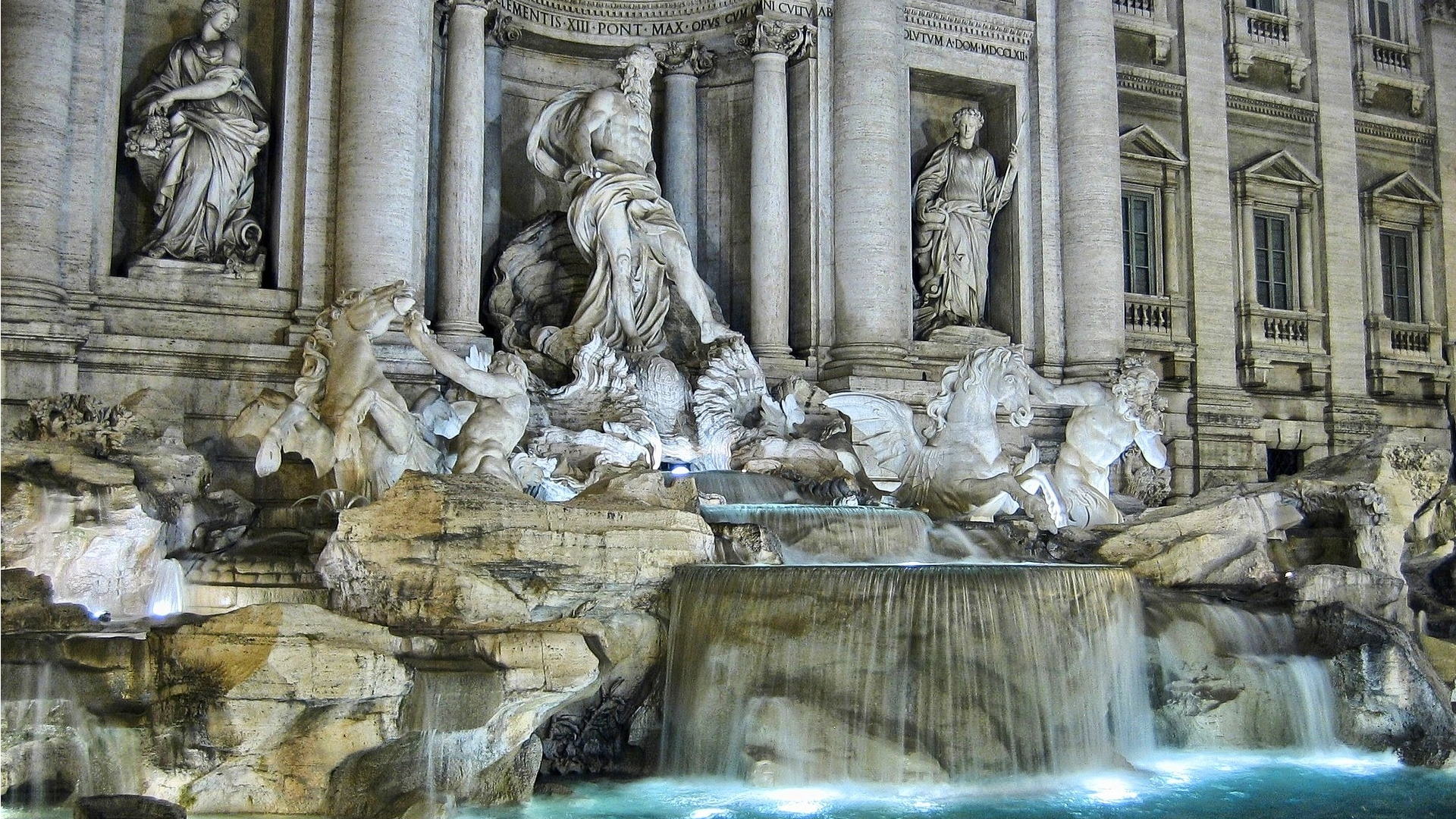
In addition to its monuments, palaces and churches, a city is also made up of the memories it evokes and the life that passes through it. A daily life that, in Rome, has always been marked by rites, holidays, anniversaries, celebrations: a full program of fixed events which, with their load of traditions, represented a (religious or civil) occasion for reflecting, meeting, sharing and having fun, season after season.
If some of them have not resisted the oblivion of time or have lost part of that sense of perfect wonder that they used to give to the Romans and to the many visitors of the city, others are still alive and kicking, even richer today than in the past. And some others, even if born in more recent years, are already part of the modern and contemporary “traditions” of the city.
To fully experience Rome and immerse yourself in its history, month by month we will present you some of the special days and moments of the city, the past and present one – the most heartfelt or awaited events, or even simply the most curious ones.
-
Giuseppe Gioachino Belli’s birthday, 7 September
-
The armistice and the battle for Rome, 8-10 September
-
The Name of Mary, 12 September
-
The Breach of Porta Pia and the capture of Rome, 20 September
-
The well and the miraculous painting, 27 September
Giuseppe Gioachino Belli’s birthday, 7 September
His 2,279 Romanesco sonnets are among the most important literary, linguistic, historical and anthropological documents of 19th century Rome, a lasting “monument” to the city’s ordinary people of which Giuseppe Gioacchino Belli was the greatest interpreter. In this boundless production, which remained virtually unpublished until the poet’s death in 1863, Roman vernacular is the most effective tool for revealing the inconsistencies and contradictions of Roman society, amid bad government, sloth and insipience. The Rome of the Popes is thus recounted with an extraordinary richness of stylistic and formal solutions, both comic and tragic, ironic and dramatic, in a poetry vibrant with colors and accents that still retains all its appeal today. The poet of Rome was born on 7 September 1791, in Via dei Redentoristi, in the Rione Sant’Eustachio. Every year, on his birthday, the Giuseppe Gioachino Belli Study Center organizes a meeting-performance in the places linked to his life or work, for example, Palazzo Poli, where Belli lived his happiest days and where he recited his “clandestine” sonnets in the salon of Russian Princess Zenaide Wolkonsky, arousing Gogol’s admiration. A floral tribute is traditionally laid at the foot of the fountain-monument in the heart of Trastevere, built in 1913 to honor Rome’s greatest poet on the 50th anniversary of his death.
The armistice and the battle for Rome, 8-10 September
In 1943, the news of the end of the alliance between Italy and Germany was spread via Radio Algiers by General Eisenhower, and then confirmed an hour later by General Badoglio. It was eight o’clock in the evening of 8 September: the illusion that the armistice would put an end to the war lasted just a few moments and Rome was soon to be left alone. At dawn, with a parade of sixty black cars King Vittorio Emanuele III, the royal family, the government, and the military leadership fled Rome for the port of Brindisi via Pescara. Meanwhile, German Wehrmacht forces were already neatly deployed south and north of Rome and they could quickly overwhelm the Italian troops left without precise and consistent orders. From the very evening of the armistice, the battle for Rome involved the Montagnola, EUR and Garbatella districts, and the Basilica of Saint Paul Outside the Walls. On 10 September, the last, extreme attempt to defend the city took place at Porta San Paolo: here too, as in the previous days, the still operational military units were flanked by civilians armed as best they can, either arrived spontaneously or organized by the anti-fascist parties, who put up a heroic yet vain resistance to the German troops. Every year, on the anniversary of the armistice and the battle for the defense of the city, considered the real beginning of the Italian Resistance, the President of the Republic, representatives of the institutions and city authorities renew the tribute to all the Italians who from 8 September 1943 to April 1945 fought for the rebirth of a new, free and democratic Italy, by laying a laurel wreath at the memorial plaques at Porta San Paolo and at the Monument in the Parco della Resistenza.
The Name of Mary, 12 September
Light giver, drop of the sea, lady, first seasonal rain: the numerous and uncertain hypotheses about its etymology and meaning are countered, for believers, by an adamantine certainty – if invoked with devotion, the name of Mary is a source of salvation, even in battle. The devotion to the most holy name of the Virgin Mary began as a local celebration in Cuenca, Spain, but became a universal Roman Rite feast in the latter quarter of the 17th century, precisely due to an epic battle. In the summer of 1683, the imperial city of Vienna was besieged by the Turks under the orders of Grand Vizier Kara Mustafa and was on the verge of surrender. Then, on 12 September, the troops of Emperor Leopold I of Austria and King Jan Sobieski of Poland began the counteroffensive that led to the defeat of the Ottoman army. An unhoped-for victory, which Pope Innocent XI attributed to the intercession of the Virgin, the true leader of the Christian forces, to honor with a great universal liturgical feast. Some years later, the pontiff and Leopold of Austria joined Rome’s newly born Confraternity for the Holy Name of Mary: the confraternity settled first in the church of Santo Stefano del Cacco and then in the old church of San Bernardo, which was soon torn down to erect a new building. Overlooking the Trajan column like the “almost twin” church of Santa Maria di Loreto, the beautiful 18th-century church of Santissimo Nome di Maria al Foro Traiano reminds us, in its dedication and decorations, of the special name-day of the Virgin Mary.
The Breach of Porta Pia and the capture of Rome, 20 September
By one of those curious coincidences of history, Rome’s third life begins on the day when the ancient Romans celebrated Natalis Romuli, the birth of the city’s hero-founder. At 10.35 am on 20 September 1870, a white flag fluttered over the dome of St. Peter’s and over Castel Sant’Angelo: it was the signal of the surrender ordered by Pope Pius IX after the cannonades of General Raffaele Cadorna’s artillery had opened a breach of about 30 meters in the Aurelian Walls, next to Porta Pia, in one of the most militarily vulnerable points of sleepy papal Rome. The papal troops put up little resistance and the battle could hardly be called epochal – few were the casualties on either side. Epochal, however, was the change it generated: after more than a millennium, the temporal power of the popes ended and the unity of the country was finally accomplished. Within a few days a popular plebiscite would sanction the annexation of Rome and Latium to the Kingdom of Italy, and in February of the following year the Eternal City would be officially proclaimed capital. The anniversary of the capture of Rome was celebrated as a national holiday until 1930, when it was abolished following the signing of the Lateran Pacts. More than 150 years later, however, it retains its profound historical and symbolic value and is among those watershed events that mark a passage of epoch and mentality, with the birth of the awareness of the separation of religion and state.
The well and the miraculous painting, 27 September
A very high number of churches, shrines and depictions, miracles, wonders and liturgical feasts attest to the spread and intensity of Marian devotion in Rome since the earliest times. The city even has its own “little Lourdes”, whose fame has its roots in the Middle Ages. An allegedly miraculous water still gushes from a faucet in one of the chapels in the centrally located church of Santa Maria in Via, just a few steps from Via del Corso and the Alberto Sordi Gallery. It is the chapel of the Madonna del Pozzo - Our Lady of the Well, which in 1256, however, was still a simple stable in the palace of Cardinal Pietro Capocci. On the night of 26-27 September of that year, the cardinal was awakened by the alarmed calls of his servants, startled by the sudden and unstoppable overflowing of the waters of a well. In the flooded stable, floating above the water was an image of Our Lady painted on a slate slab, which seems to elude all attempts to retrieve it. It was the cardinal himself who succeeded in the feat, after gathering himself in prayer, and only then did the waters subside by withdrawing into the well. Such a prodigy could not go unnoticed, and so the cardinal, having obtained the approval of Pope Alexander IV, had a chapel built around the miraculous well at his own expense. The pope himself took part in the solemn procession that accompanied the venerated image to its new home. Which still observes from the main wall of the chapel those who go to pay homage to her or take a sip of the water from the ancient well.
October in Rome. Key dates and events (today as in the past)
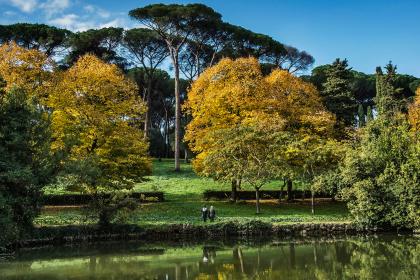
Special days and moments to fully experience Rome and its history
November in Rome. Key dates and events (today as in the past)
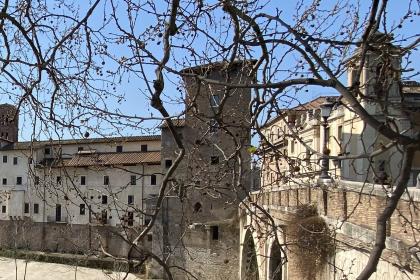
The Monument to Giuseppe Gioachino Belli
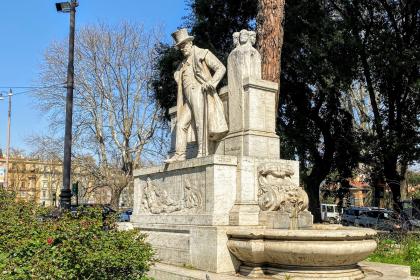
 Condividi
Condividi
Poli Palace - Trevi fountain
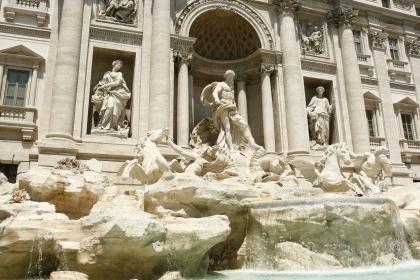
 Condividi
Condividi
Porta San Paolo
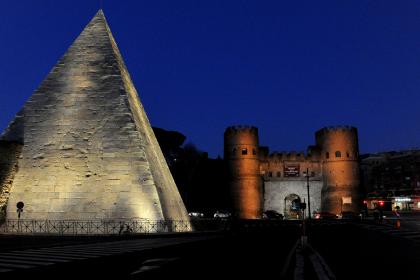
 Condividi
Condividi
The Pyramid of Caius Cestius
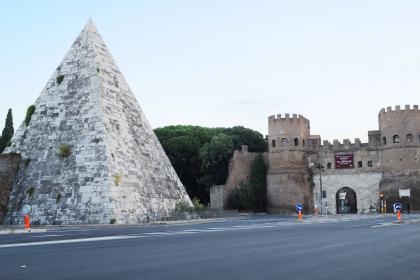
 Condividi
Condividi
Church of Santissimo Nome di Maria al Foro Traiano
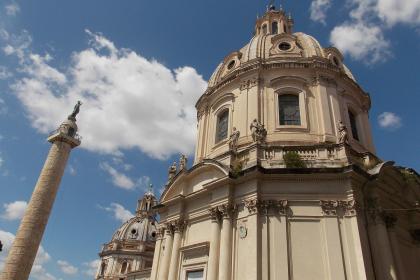
 Condividi
Condividi
The Trajan's Markets - The Museum of the Imperial Fora
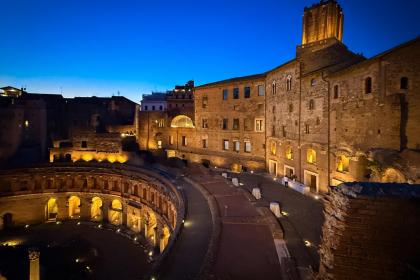
 Condividi
Condividi
The Trajan’s Column
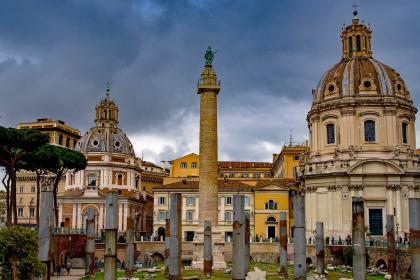
 Condividi
Condividi
Church of Santa Maria di Loreto al Foro Traiano
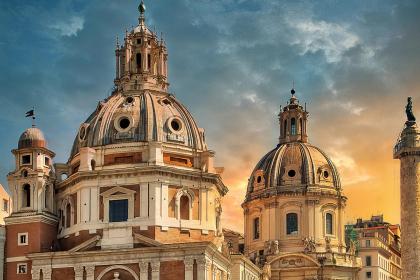
 Condividi
Condividi
Porta Pia and the Museo Storico dei Bersaglieri
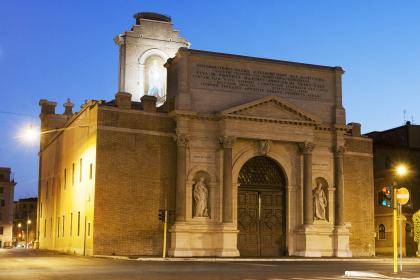
 Condividi
Condividi
The Aurelian Walls
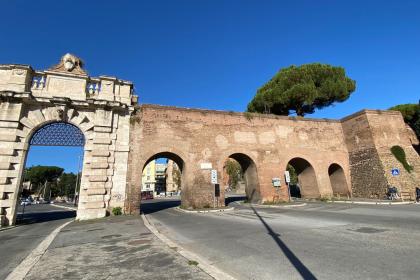
 Condividi
Condividi
The Madonnelle of Rome
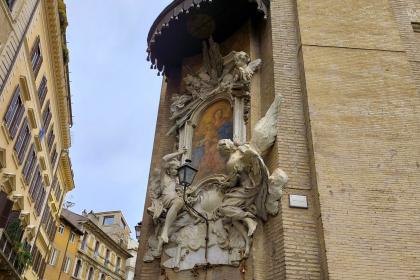
The charming street shrines dedicated to the Virgin Mary and their many stories
Church of Santa Maria in Via - Madonna del Pozzo
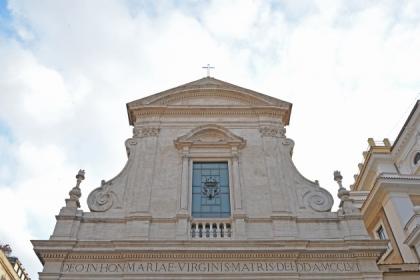
 Condividi
Condividi











































